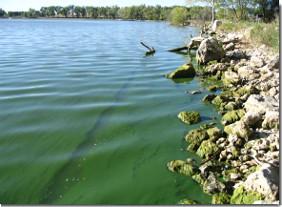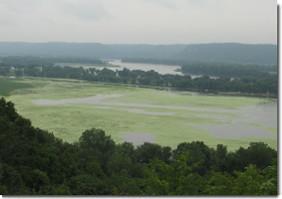Climate Change and Harmful Algal Blooms
Scientists predict that climate change will have many effects on freshwater and marine environments. These effects, along with nutrient pollution, might cause harmful algal blooms to occur more often, in more waterbodies and to be more intense. Algal blooms endanger human health, the environment and economies across the United States.
Climate Impacts That Might Affect Algal Blooms:
Warming water temperature

Harmful algae usually bloom during the warm summer season or when water temperatures are warmer than usual. Warmer water due to climate change might favor harmful algae in a number of ways:
- Toxic blue-green algae prefer warmer water.
- Warmer temperatures prevent water from mixing, allowing algae to grow thicker and faster.
- Warmer water is easier for small organisms to move through and allows algae to float to the surface faster.
- Algal blooms absorb sunlight, making water even warmer and promoting more blooms.
Changes in salinity
Climate change might lead to more droughts, which make freshwater saltier. This can cause marine algae to invade freshwater ecosystems. In the southwestern and south central United States, toxic marine algae have been killing fish in freshwater lakes since 2000.
Higher carbon dioxide levels
Algae need carbon dioxide to survive. Higher levels of carbon dioxide in the air and water can lead to rapid growth of algae, especially toxic blue-green algae that can float to the surface of the water.
Changes in rainfall

Climate change might affect rainfall patterns, leading to alternating periods of drought and intense storms. This can cause more nutrient runoff into waterbodies, feeding more algal blooms.
Sea level rise
Scientists predict that sea level could rise up to one meter by the year 2100. This would create more shallow and stable coastal water, conditions that are perfect for the growth of algae.
Coastal upwelling
Coastal upwelling is the process by which winds push surface water offshore and deep water moves towards the coast, bringing nutrients from the ocean floor to the surface. Climate change is expected to alter the timing and intensity of coastal upwelling. Along the west coast of the United States, excess nutrients delivered by upwelling might lead to more algal blooms.
